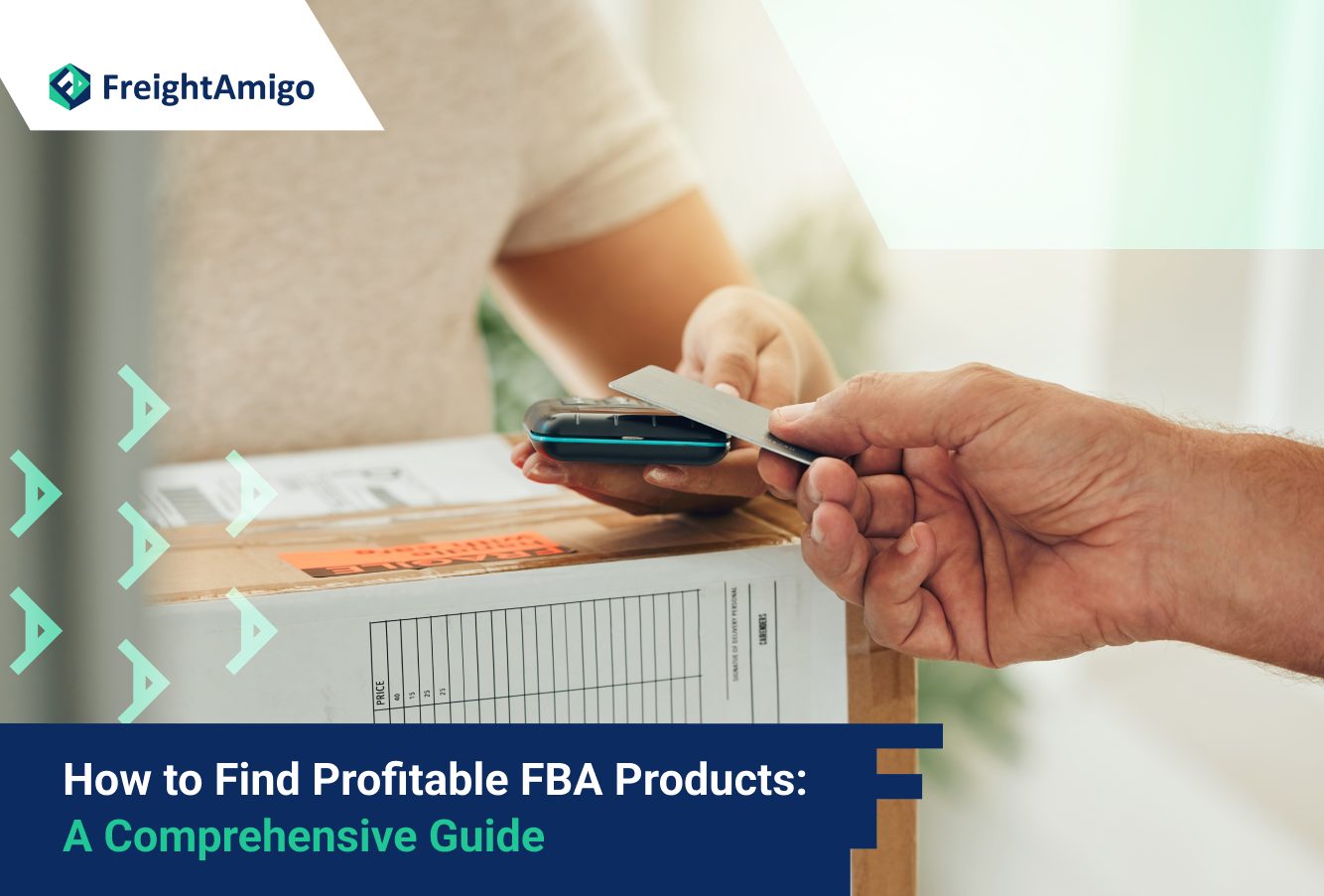Author Name: Aurora Park – Marketing Analyst at FreightAmigo
In today’s digital age, ecommerce has become a booming industry. With more consumers shopping online than ever before, there is a tremendous opportunity for entrepreneurs to start their own ecommerce businesses. One of the most popular platforms for selling products online is Amazon. As a seller on Amazon, it is crucial to find profitable FBA (Fulfillment by Amazon) products that will attract customers and generate sales.
Want to compare the best Express, Air Freight, Sea Freight, Rail Freight & Trucking rates so as to have better control on cost?
The Importance of Product Research
Before diving into the process of finding profitable FBA products, it is essential to understand the importance of product research. Product research is the foundation of a successful ecommerce business. It involves researching different products or niches and using various data points to determine if a product will be successful or not. Without proper research, you may end up investing time and money in products that have low demand or high competition, leading to potential failure.
How to Conduct Product Research
Now that you understand the significance of product research, let’s dive into the steps involved in finding profitable FBA products.
Step 1: Determine Your Product Criteria
Before you start researching products, it is essential to define your product criteria. Your product criteria will help you make sound decisions and narrow down your product search. Consider factors such as selling price, product size and weight, product simplicity, and whether the product is perishable or consumable. These criteria will guide your research and ensure you are looking for products that align with your business goals and capabilities.
Step 2: Explore Different Product Ideas
Once you have established your product criteria, it’s time to explore different product ideas. There are several ways to generate product ideas, including:
- Start with your hobbies or interests: Consider products that align with your personal interests or hobbies. Selling products you are passionate about can make the process more enjoyable and rewarding.
- Research current trends: Stay up to date with the latest trends by following social media platforms and using tools like Google Trends. Identify products that are currently popular and in high demand.
- Search on Amazon: Use Amazon’s Best Seller page to discover top-selling products in various categories. Explore different subcategories to find niche products that have the potential for success.
- Attend wholesale trade shows: Visit trade shows to meet suppliers and manufacturers in person. These events provide an opportunity to discover new products and build relationships with potential suppliers.
- Search on Alibaba: Explore Alibaba, a B2B marketplace, to find unique products that you can private label and sell under your own brand. Use the search function to find products that align with your criteria.
- Use product research software: Utilize advanced product research tools like Jungle Scout to find high-demand, low-competition products. These tools provide searchable catalogs and data analysis to help you make informed decisions.
Step 3: Evaluate Product Ideas
Once you have generated a list of potential product ideas, it’s time to evaluate them based on their profitability and marketability.
- Assess profitability: Consider factors such as manufacturing costs, selling price, and potential profit margins. Calculate all associated expenses, including fees, storage costs, and shipping fees, to determine if the product can generate a profitable return on investment.
- Analyze marketability: Research the demand for the product by examining Amazon Best Seller Rank, customer reviews, and keyword search volume. Look for products with a consistent demand and positive customer feedback.
- Consider competition: Evaluate the level of competition for each product idea. Avoid product categories dominated by big brands or products with thousands of reviews. Look for opportunities where you can differentiate yourself and provide a unique selling proposition.
- Assess seasonality: Determine if the product is seasonal or evergreen. Seasonal products may have high demand during specific times of the year, but sales may decline during off-peak seasons. Evaluate the potential risks and benefits of selling seasonal products.
Step 4: Make an Informed Decision
Based on your evaluation of the product ideas, narrow down your list to a few select products that meet your criteria and show potential for profitability. Consider factors such as market demand, competition, and your own expertise and resources. Make an informed decision by carefully weighing all the relevant factors.
Conclusion
Finding profitable FBA products requires thorough product research and evaluation. By following the steps outlined in this comprehensive guide, you can increase your chances of finding successful products to sell on Amazon. Remember to consider your product criteria, explore different product ideas, evaluate their profitability and marketability, and make an informed decision. With careful research and analysis, you can find profitable FBA products that will set your ecommerce business up for success.
There are different options for cargo transportation. If you want to choose the most convenient and suitable solution, it is best to have the full support of logistics experts! If you are planning to ship goods overseas, please go to the FreightAmigo page for inquiries.
===
Read More:
The Role of Fulfillment Centers in Modern Supply Chains
===
If you have any inquiries on logistics/supply chain, feel free to contact FreightAmigo now:
Phone : +852 28121686
WhatsApp: +852 27467829









































